
Lot 23
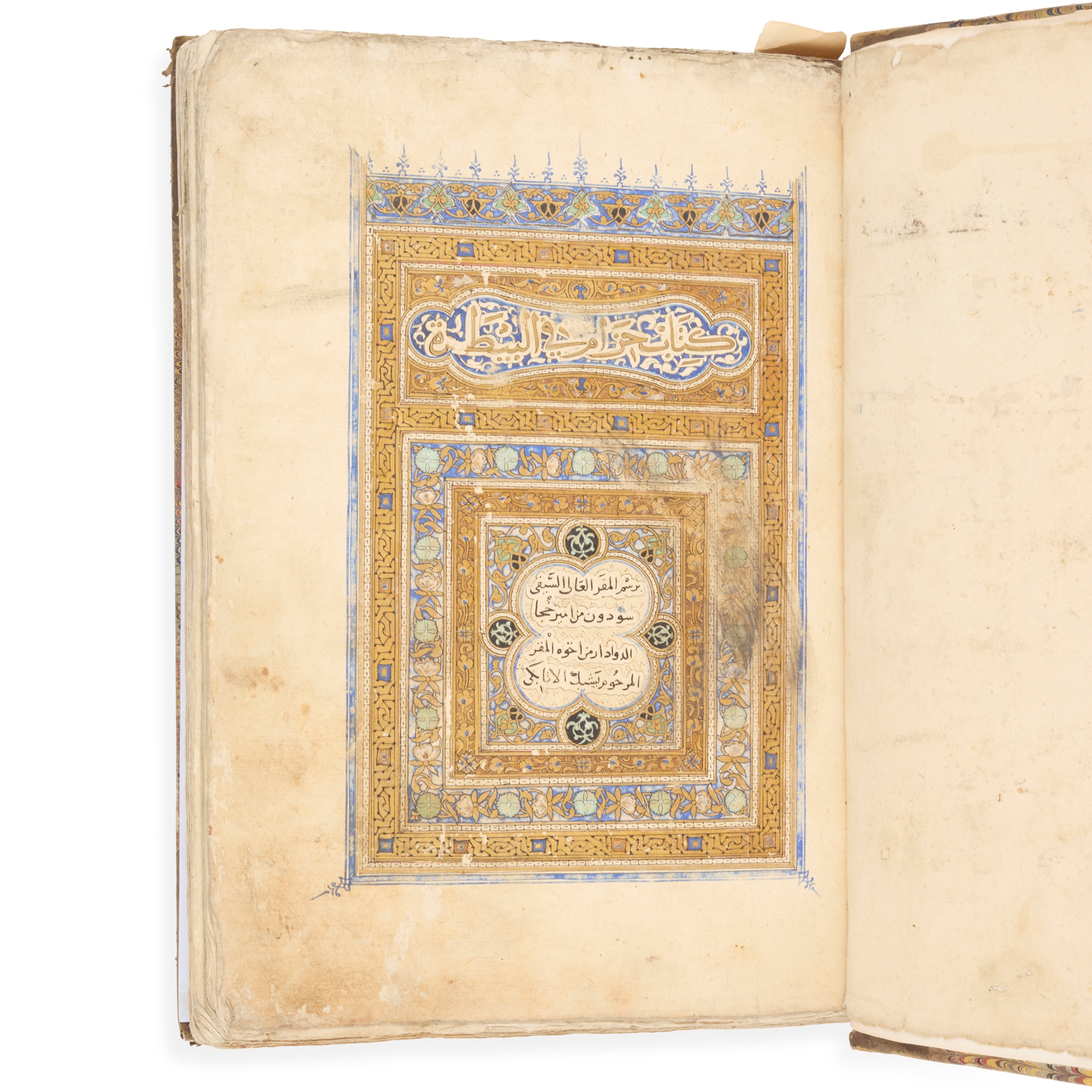
A MAMLUK MANUSCRIPT OF IBN AKHI HIZAM'S 'KITAB AL-BAYTARAH' ('BOOK OF HIPPIATRICS' OR HORSE MEDICINE)
SYRIA OR EGYPT, 15TH CENTURY, WITH LATER ADDITIONS



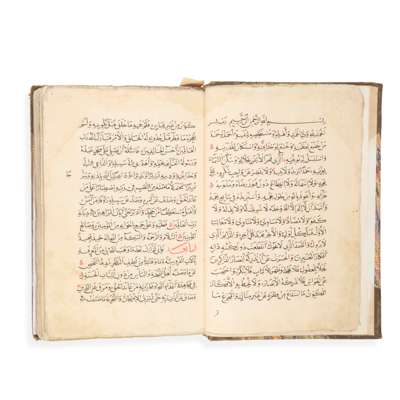




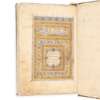

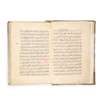
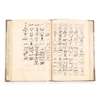
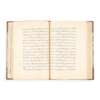
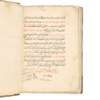
Auction: 10 December 2025 from 14:00 GMT
Description
Arabic manuscript in black ink on polished laid paper (mainly with laid lines only, a few leaves possibly with chain lines in clusters of two), [2] 1-118 [2] 119-365 folios and 2 flyleaves, naskh script, 15 lines to the page, rubricated headings and keywords throughout, section- and emphasis-markings in red, illuminated and polychromatic title-page in blue and green pigments and gold containing concentric strapwork and floral frames, enclosing title cartouche with ‘Kitab Hizam fi’l-Baytarah' written in gold muhaqqaq script, and quatrefoil dedication panel with text written in naskh script in black ink within cloudbands on hatched background (the leaf pasted onto recto of first text leaf, quatrefoil panel possibly supplied and laid down), double-page decorative table of horse brands to pp. 96-7, catchwords to about p. 280 (all aligning), later inked pagination to upper corners (probably by an English hand, 18th or early-19th century), with 2 additional manuscripts bound in at rear, both probably 19th century, each with later title in English in blue ink to initial blank ('Turkish M.S.S. History of certain Kings in the year of the Hegira 1011', 11 ff., and ‘Jami-i-Geetee Numa or Mirror of the World, Arabic M.S.S.’, 25 ff., in Persian with interlinear translation in Latin, late-19th century or early 20th-century British binding of half calf lettered on spine ‘Abee Beyam on the Science of Horsemanship, Arabic M.S.S.’, title-page smudged and marked, backed onto first leaf of text with delamination to lower fore corner, variable damp-staining to corners throughout, with concomitant softening of paper to final 15 or so leaves
Dimensions
Folio 32.3cm x 21.5cm
Provenance
Torridon House, Home of The Earls of Lovelace; Lyon and Turnbull, Torridon, 28 October 2015, lot 412.
This manuscript formed part of the library at Torridon House. The house was acquired by the 4th Earl of Lovelace in 1960.
Footnote
This exceptional manuscript, made for a 15th century Mamluk officer, is a copy of the earliest and most important Arabic text on hippiatry, written some six centuries earlier. It also clearly had a second life in 19th century Britain as an object of study, itself a testament to its elegance. The manuscript drew prolonged and competitive bidding, ultimately achieving over £189,000 and surpassing all expectations.
The ability to care for horses underpinned the strength of Middle Eastern dynasties even before the rise of Islam. These equine engines of empire were key to the Mamluks, a military caste of manumitted slaves who ruled over Egypt, Syria, the Hijaz, and parts of Anatolia from 1250-1517 and whose skills as cavalrymen were second to none.
Muhammad ibn Ghalib ibn Ya’qub ibn Ghalib Ibn Akhi Hizam al-Khuttali, who lived in the second half of the 9th century CE, was a high-ranking commander in the Khurasani corps which formed the power base of the Abbasid caliphate. According to the Fihrist of Ibn al-Nadim, he wrote the Kitab al-Baytarah for the caliph al-Mutawakkil (r. 847-61 CE), while other sources indicate that he was stable-master to al-Mu’tadid, who reigned some 30 years later (892-902 CE). Based on a Greek text by Byzantine author Theomnestus, which was translated into Arabic by Hunayn ibn Ishaq, the work is the oldest original Arabic treatise on horses, and the ‘first veterinary work in Arabic’ (Renton, ‘Mediterranean Horse Cultures’, Pedralbes, Vol. 40, 2020, p. 108). Given that the Mamluks were defined by their ability to fight on horseback, it is unsurprising that Ibn Akhi Hizam’s text ‘became the manual par excellence for furusiyah masters, mamluks, and halqah troopers’ (al-Sarraf, ‘Mamluk Furūsīyah Literature and Its Antecedents’, Mamluk Studies Review, Vol. 8 No. 1, 2004, p. 150). It is in such a context that a fine example such as this would have been produced for a patron within the elite of the Mamluk empire.
The dedication on the title-page of this copy reads ‘bi-rasm al-maqarr al-'ali al-Sayfi Sudun min Amir Khuja al-Dawadar min ikhwat al-maqarr al-marhum Yashbak al-atabaki' ('with the permission of the high authority Sayfi [=Sayf al-Din] Sudun, of [the household of] commander Khuja, keeper of the ink-stand [i.e. chief secretary to the Mamluk sultan], one of the brothers of the deceased authority Yashbak the Atabeg [commander-in-chief]'). The illumination on this page is closely comparable to the opening of a section of the Ihya’ ‘ulum al-din of al-Ghazali endowed by the Mamluk sultan Qaytbay to his madrasa, now in the Los Angeles County Museum of Art (inv. no. M.73.5.516). Presumably produced between 1468-98, the opening of the Ihya’ shares the present text’s gold strapwork inner borders and lobed central dedication panel (Drake Boehm, B., and Holcomb, M. (eds.), Jerusalem, 1000-1400: Every People Under Heaven, Metropolitan Museum of Art, 2016, p. 73 fig. 32). A very similar effect is also seen in the frontispiece of a copy of the Qasidah al-burdah in the Arthur M. Sackler Gallery (inv. no. S1986.29), attributed to Egypt c. 1460. Together, these suggest a similar attribution for the present manuscript to Egypt in the second half of the 15th century.
Sudun was one of the commonest given names of the Burji (Circassian) Mamluk era, with the contemporary chronicler Ibn Taghribirdi recording over 40 Mamluk amirs with named Sudun or al-Suduni in the late 14th and early 15th centuries. Notably the name is particularly associated with figures renowned for their horsemanship (furusiyah), such as Sudun Taz, stable-master under the great sultan Barquq (Hathaway, A Tale of Two Factions: Myth, Memory, and Identity in Ottoman Egypt and Yemen, 2003, p. 131). A Sayf al-Din Sudun (d. 865 AH/1461 CE) is identified as the commander-in-chief (malik al-umara') of Hama in an inscription on a copper bowl held by the V&A (accession number 557-1878; L. A. Mayer, Saracenic Heraldry, 1933, p. 117). This Sudun was a mamluk of sultan al-Malik al-Mu'ayyad (r.1413-21 CE), and it would be unusual for Sudun's name not to include his exulted nisbah al-Mu'ayyadi in the present context. However, a Yashbak al-Suduni al-Atabaki (d. 849 AH/ 1445 CE), regent (na'ib) of Aleppo, is himself identified as a mamluk of al-Mu'ayyad in the Mamluk-era biographical dictionary al-Daw' al-lami' li-ahl al-qarn al-tasi' ('The Light Shining on the People of the Ninth Century') by the 15th-century Egyptian scholar al-Sakhawi. Such a beautiful manuscript would have been appropriate for any of these notables.













